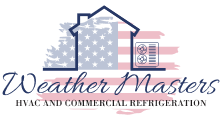Clean air makes a big difference in how comfortable a space feels. When dust, mold, or bacteria build up inside air ducts, they can lower indoor air quality and spread unpleasant smells through every room. By sanitizing air ducts, we can remove these contaminants and improve the air we breathe while reducing unwanted odors.
We often focus on cleaning visible surfaces but forget the hidden areas that affect our environment the most. Air duct sanitation targets the source of poor air quality and lingering smells, helping HVAC systems work more efficiently and keeping indoor spaces fresher.
As we explore how air duct sanitation improves air quality, removes odors, and supports long-term maintenance, we’ll see why this simple step can make a lasting difference in both comfort and health.
How Air Duct Sanitation Improves Air Quality

Clean air ducts help maintain steady airflow, lower dust buildup, and reduce harmful particles that circulate through our HVAC system. Regular sanitation removes hidden contaminants that affect indoor air quality and can lead to respiratory issues.
Removal of Dust and Allergens
When air ducts collect dust, pet dander, and pollen, these particles spread through the air each time the HVAC system runs. Over time, this buildup lowers air quality and increases allergy symptoms.
By cleaning ducts, we remove these trapped materials before they re-enter the living space. This process helps limit exposure to airborne allergens that cause sneezing, coughing, and eye irritation.
A professional sanitation service often uses high-efficiency vacuums and brush systems to dislodge and extract fine particles. This improves airflow and reduces the spread of respiratory irritants throughout the home.
| Common Allergens Found in Air Ducts | Possible Effects |
|---|---|
| Dust mites | Sneezing, nasal congestion |
| Pet dander | Itchy eyes, coughing |
| Pollen | Seasonal allergy flare-ups |
Reduction of Mold, Bacteria, and Pollutants
Moisture inside ducts can allow mold and bacteria to grow, especially in humid climates or when condensation forms near cooling coils. These microorganisms release spores and odors that circulate through the HVAC system.
Sanitizing ducts with approved cleaning agents removes mold spores and limits their return. This helps prevent microbial growth that can affect both air quality and system efficiency.
We also reduce volatile organic compounds (VOCs) and other airborne pollutants that cling to duct surfaces. Removing these contaminants results in cleaner air and fewer unpleasant smells.
Regular inspections help identify leaks or damp spots that encourage future growth, keeping the system dry and clean.
Impact on Respiratory Health and Allergy Symptoms
Poor air quality affects people with asthma, allergies, or other respiratory issues the most. When ducts stay dirty, they release fine particles that irritate the airways and make breathing harder.
By sanitizing air ducts, we lower the concentration of dust, mold spores, and bacteria in the air we breathe. Cleaner air supports better respiratory health and can ease coughing, wheezing, and sinus problems.
Families often notice fewer allergy symptoms and less dust settling on surfaces after cleaning. Maintaining a clean HVAC system also helps air filters work more effectively, supporting consistent airflow and healthier indoor air.
Odor Elimination Through Air Duct Sanitizing
Air duct sanitizing targets the root causes of unpleasant odors inside the HVAC system. By removing bacteria, mold, and mildew growth, we create cleaner airflow and reduce the chance of smells returning.
Sources of Unpleasant Odors in Ductwork
Odors in air ducts often come from organic buildup and moisture. Dust, pet dander, and pollen collect inside ducts, feeding bacteria and mold. When humidity rises, these materials break down and release musty or sour smells.
Common odor sources include:
- Mildew and mold colonies forming on damp surfaces
- Bacteria from dust and debris buildup
- Pet hair and dander trapped in filters or vents
- Smoke or cooking particles absorbed by duct materials
We also see odors caused by standing water in drip pans or clogged drain lines. These damp areas allow mildew growth to spread through the air duct system. Regular inspection and cleaning help us find these issues early before they affect indoor air.
Role of Sanitization in Odor Removal
Air duct sanitizing uses EPA-approved disinfectants to neutralize bacteria, mold spores, and mildew. Unlike basic air duct cleaning, which removes dust and debris, sanitizing treats the surfaces inside the ducts to stop odor-causing microbes from reproducing.
We apply sanitizing agents evenly through the ductwork using fogging or spray systems. This process coats the interior walls, vents, and coils. It helps eliminate odor-producing microorganisms that normal cleaning may miss.
A short table shows how sanitizing differs from cleaning:
| Process | Main Purpose | Result |
|---|---|---|
| Air Duct Cleaning | Remove dust and debris | Cleaner airflow |
| Air Duct Sanitizing | Kill bacteria, mold, and mildew | Odor-free air |
By addressing both visible and invisible contaminants, we restore a neutral smell to the air circulating through the HVAC system.
Long-Term Prevention of Mildew and Mold Smells
To prevent odors from returning, we focus on moisture control and routine maintenance. Mold and mildew thrive in damp, dark areas, so keeping ducts dry stops new growth.
We check for leaks, condensation, or blocked vents that trap humidity. Installing high-efficiency filters and maintaining proper airflow lowers the chance of spores settling inside the air duct.
Regular air duct sanitizing every 1-2 years helps maintain a clean environment. We also recommend inspecting the HVAC system after water damage or during humid seasons.
By combining cleaning, sanitizing, and moisture management, we reduce long-term odor problems and keep indoor air fresher.
The Process and Benefits of Professional Air Duct Cleaning
We focus on how professional air duct cleaning removes built-up dust, debris, and allergens while improving HVAC efficiency and airflow. Clean air ducts help reduce odors and create a healthier indoor environment for homes and businesses.
Inspection and Assessment
We begin with a detailed inspection and assessment of the ductwork. This step helps identify dust buildup, mold growth, or blockages that may restrict airflow. Using cameras and specialized tools, we can view the inside of ducts without removing large sections of the system.
Technicians often check for leaks, damaged insulation, and moisture issues that can lead to microbial growth. They document findings and decide which cleaning and sanitization methods will be most effective.
A clear inspection report allows us to plan the cleaning process efficiently. It ensures that we address both visible and hidden contaminants, helping maintain consistent air quality throughout the property.
Cleaning and Sanitization Techniques
Professional air duct cleaning services use equipment such as rotary brushes, high-powered vacuums, and compressed air tools. These tools loosen and remove dust, pet dander, and other particles from the duct walls.
We often apply an EPA-approved sanitizer to help control bacteria, mold spores, and odors. This step is especially useful in ducts exposed to moisture or where previous contamination was detected.
| Tool/Method | Purpose |
|---|---|
| Rotary Brush | Scrubs duct surfaces |
| Negative Air Machine | Collects and filters debris |
| Sanitizing Spray | Reduces microbial presence |
The combination of mechanical cleaning and sanitization helps ensure that clean air ducts deliver fresher air and reduce odor sources inside the building.
Enhancing HVAC Efficiency and Airflow
Clean ducts allow air to move freely through the system, improving HVAC efficiency and reducing strain on fans and filters. When airflow is unobstructed, the system maintains temperature more evenly and uses less energy.
Regular air duct cleaning also reduces dust accumulation on coils and vents. This helps prevent overheating and extends the life of HVAC components.
We recommend routine inspections and periodic cleaning to maintain peak airflow and lower energy costs. Cleaner ducts contribute to better indoor comfort and improved air quality year-round.
Maintaining Clean Air Ducts for Lasting Results
Keeping air ducts clean helps maintain consistent airflow, reduce allergens, and support better indoor air quality. Regular service also prevents dust buildup and lingering odors that can return if maintenance is neglected.
Recommended Cleaning Frequency
We should schedule air duct cleaning based on how often we use our HVAC system and the environment around us. Homes with pets, smokers, or people with allergies may need cleaning every 2-3 years, while others can wait up to 5 years.
If we live in an area with high dust, pollen, or humidity, more frequent service helps prevent mold and debris buildup. It’s also wise to clean ducts after major renovations or construction work since fine particles can collect inside vents.
A professional air duct service can inspect the system and recommend a schedule that fits our needs. Keeping a record of past cleanings helps track when the next one is due, ensuring consistent air quality and system efficiency.
Signs Your Ducts Need Attention
Certain signs tell us it’s time to clean our ducts. If we notice musty smells, visible dust near vents, or uneven airflow, the ducts may be dirty. Allergy symptoms that worsen indoors can also signal excess dust or mold inside the system.
We should check for dark streaks around vents or visible debris when removing vent covers. If our energy bills rise without a clear reason, restricted airflow from dirty ducts could be the cause.
A simple checklist can help:
| Sign | Possible Cause | Action |
|---|---|---|
| Musty odor | Mold or moisture | Schedule cleaning |
| Dust buildup | Debris accumulation | Inspect filters and ducts |
| Weak airflow | Blocked vents | Professional inspection |
Recognizing these signs early helps prevent larger issues and keeps our system running efficiently.
Tips for Ongoing Air Quality Improvement
We can maintain cleaner ducts by combining regular cleaning with daily habits that limit dust and allergens. Replace HVAC filters every 1-3 months, and use high-efficiency filters to trap smaller particles.
Keeping floors and furniture dust-free reduces what enters the ducts. Vacuuming with a HEPA filter and wiping surfaces weekly helps control buildup.
We should also maintain proper humidity levels between 30-50% to discourage mold growth. Sealing duct joints and ensuring vents aren’t blocked by furniture improves airflow and reduces strain on the system.
By following these steps, we support lasting results from professional cleaning and help maintain healthy, fresh indoor air.




